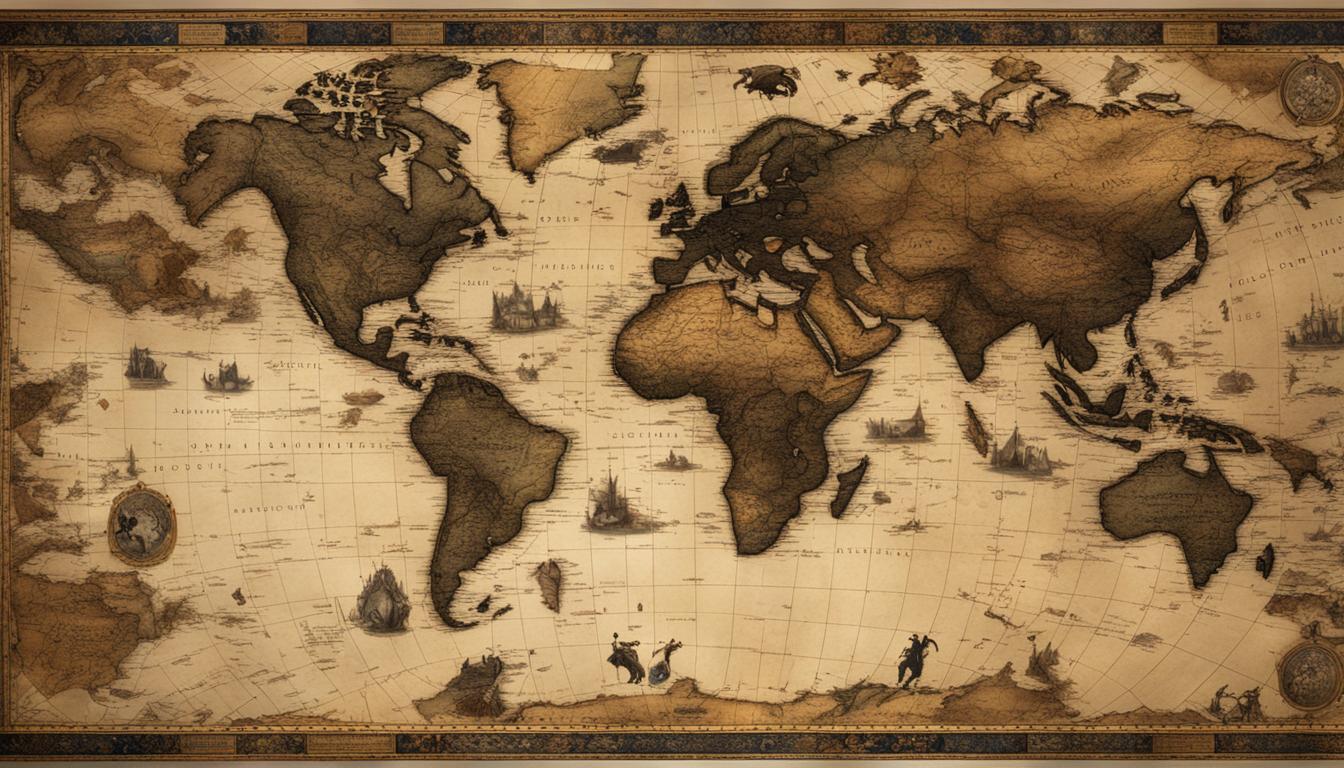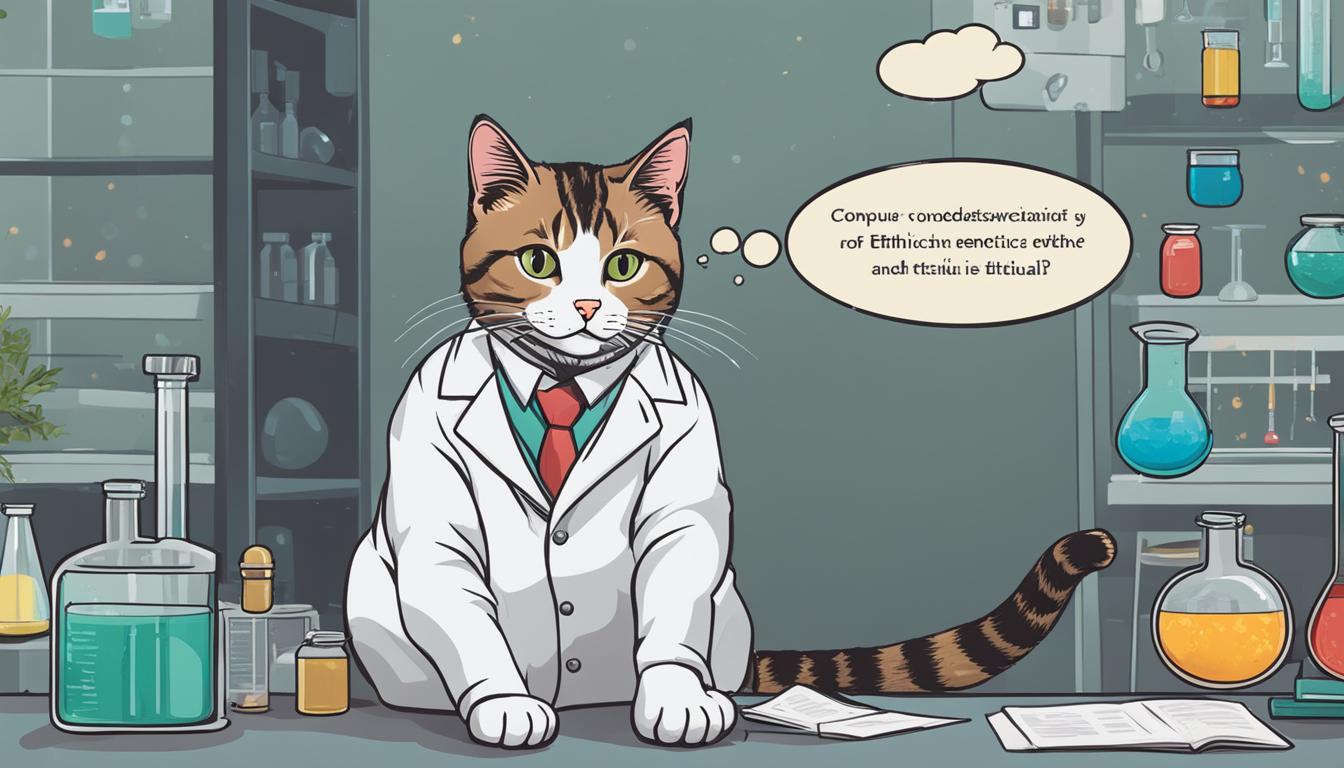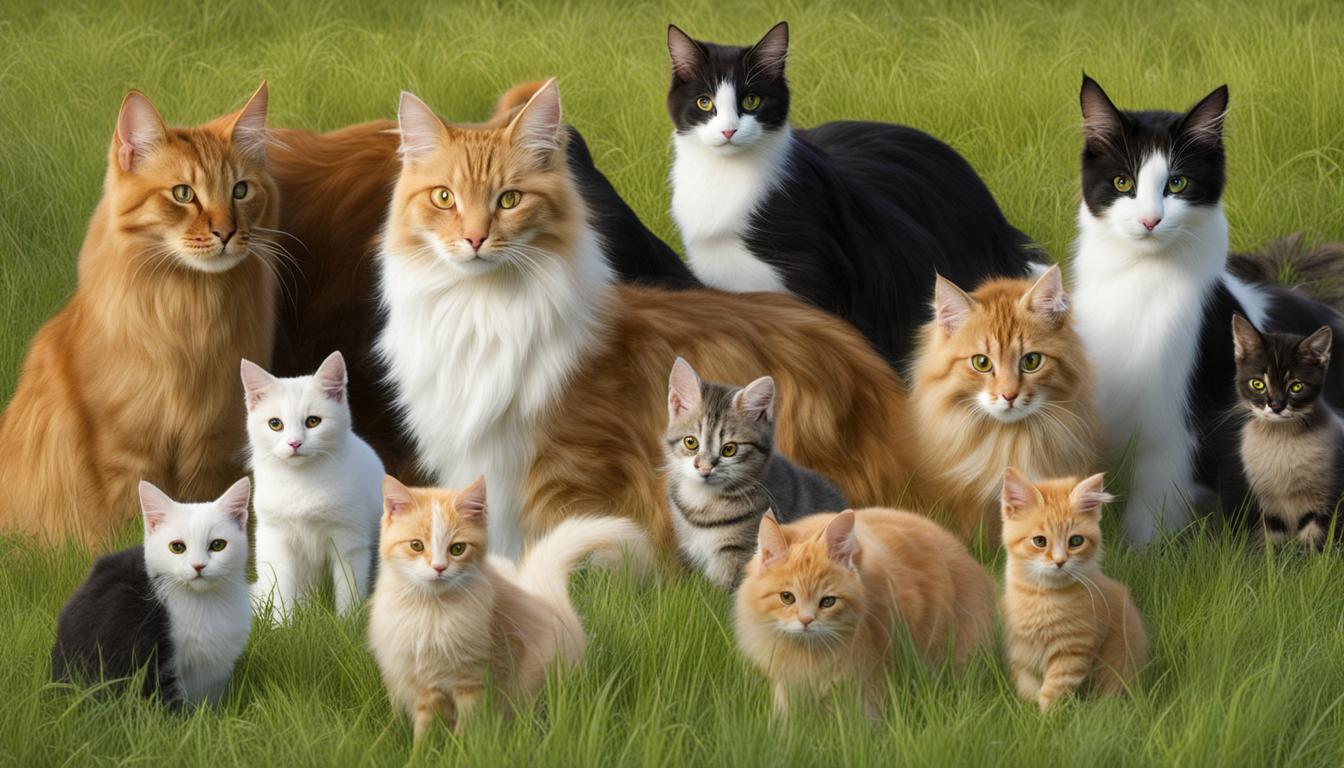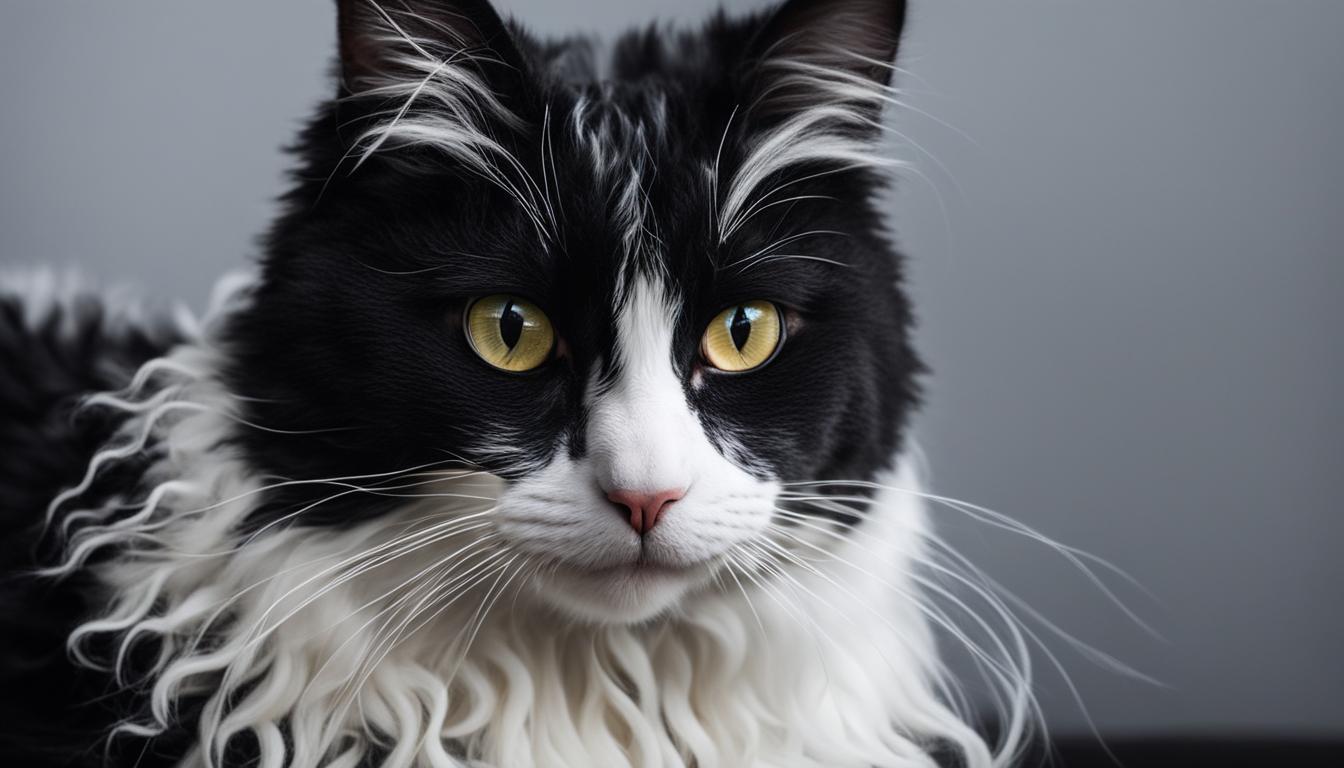Tracing the origins of our feline friends has always fascinated me. I’ve often found myself wondering about the ancient roots of domestic cats and how their genetics have evolved over time. Delving into the realm of original cat genetics is like embarking on a thrilling journey through history, unearthing clues that connect these magnificent creatures to their ancient ancestors.
Key Takeaways:
- Tracing original cat genetics reveals the ancient ancestry of our furry companions.
- Historical cat genetics studies provide insights into the domestication process and the development of different cat breeds.
- Research on original feline ancestry sheds light on the close relationship between cats and humans throughout history.
- Exploring the genetic origins of domestic cats helps us understand their behavior, traits, and health.
- Studying ancient cat genetics continues to deepen our knowledge and appreciation for these beloved feline companions.
The Origins of Domestic Cats
Tracing cat genetic lineage has been a fascinating endeavor, shedding light on the origins of domestic cat species and their ancestral feline genetics. The domestication process of the domestic cat likely began around 10,000-11,000 years ago in the Fertile Crescent, a region known for its agricultural advancements. Humans, adopting more settled lifestyles, found a mutual benefit in welcoming cats into their communities. The cats, with their natural inclination to hunt and control crop-destroying rodents, became invaluable allies to early farmers.
“The human/cat relationship has been intertwined for thousands of years, with cats proving their worth as skilled hunters and companions.” – Dr. Jane Peterson, Feline Genetics Researcher
The close relationship between humans and cats enabled their spread to various parts of the Old World, likely facilitated by ancient trade routes between civilizations. This expansion allowed for the development of different breeds, each originating from the indigenous cats of their regions. Over time, the process of pure breeding led to the loss of genetic diversity in some breeds. However, this loss did not necessarily correlate with breed popularity or age, indicating that aesthetics played a significant role in breed selection.
The Spread of Cats and Their Remarkable Genetic Adaptability
Cats, originating from the Fertile Crescent, embarked on a remarkable journey encompassing most parts of the Old World. Tracing their migration patterns has revealed distinct genetic clustering in different regions. A Bayesian analysis of cat populations has identified four genetic clusters corresponding to Europe, the Mediterranean basin, East Africa, and Asia. This finding highlights the significant role of geography in shaping cat genetics.
| Region | Genetic Cluster |
|---|---|
| Europe | Cluster A |
| Mediterranean basin | Cluster B |
| East Africa | Cluster C |
| Asia | Cluster D |
The unique genetic adaptations of cats in different regions have enabled their survival and thriving in diverse environments. From the elegant and long-haired Persians of Europe to the agile and heat-tolerant Siamese of East Asia, each breed carries a testament to the remarkable adaptability of cats.
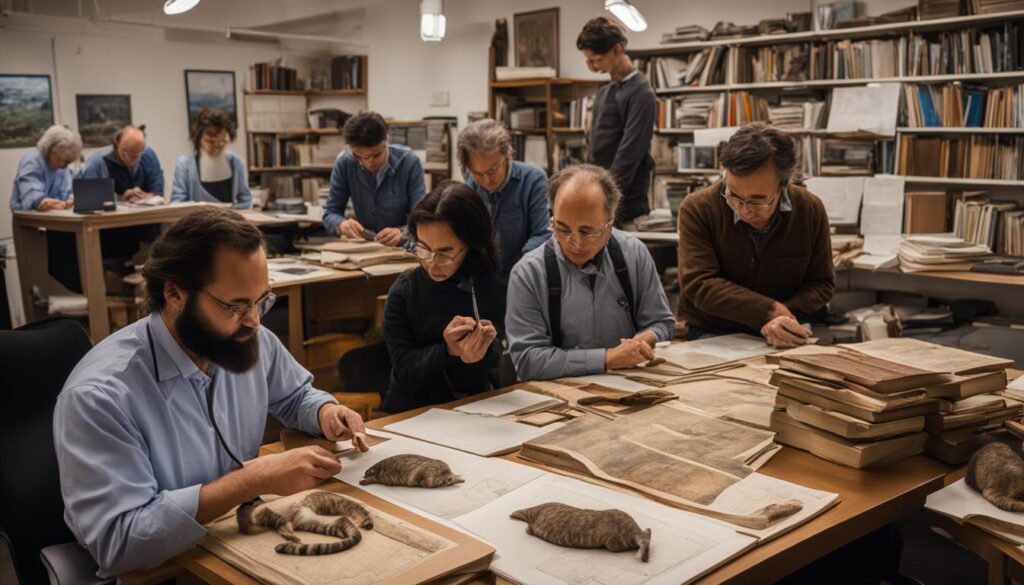
Understanding the origins of domestic cats is not only a matter of historical curiosity but also crucial in appreciating the deep-rooted bond between felines and humans. The ancestral feline genetics investigation has provided valuable insights into the journey of these beloved companions throughout history. By delving into the secrets of their genetic heritage, we gain a deeper appreciation for the role cats have played in our shared evolution.
Exploring the Earliest Cat Breeds
The development of cat breeds has a rich history that dates back centuries. By studying the original feline breeds, researchers have gained valuable insights into the genetics and characteristics of these ancient cats. This research provides a glimpse into the early stages of breed formation and the selective breeding practices that shaped the diverse array of cat breeds we know today.
Origins of Cat Breeds
Early cat breeds emerged from indigenous cats of their respective regions. These cats were likely bred for specific traits or purposes, such as hunting or companionship. The selective breeding process involved mating cats with desired characteristics, which led to the establishment of distinct breed types. This study of original feline breeds allows us to trace the lineage and evolution of specific breeds as they were shaped by human intervention and preferences.
In addition to understanding the origins of cat breeds, researchers have also explored the impact of pure breeding on genetic diversity. While pure breeding may lead to a reduction in genetic variation, it does not necessarily correspond to breed popularity or age. This finding challenges the notion that older breeds are always more genetically diverse, highlighting the complex relationship between breed development and genetic traits.
Research on Ancient Cat Genetics
Advancements in DNA analysis have allowed researchers to delve deeper into ancient cat genetics. By analyzing the genetic makeup of ancient cat remains, scientists can uncover important clues about the history and evolution of different breeds. These genetic studies help answer questions about the ancestral origins of specific breeds and shed light on the interplay between natural selection and human-driven selection in shaping breed characteristics.
Furthermore, the examination of ancient cat genetics provides insights into the broader context of human-cat interactions throughout history. By studying the genetic signatures of ancient cats, researchers can better understand the cultural, social, and environmental factors that influenced the development and spread of different cat breeds across different regions of the world.
| Cat Breed | Region of Origin | Distinct Characteristics |
|---|---|---|
| Maine Coon | United States | Large size, tufted ears, shaggy coat |
| Persian | Persia (modern-day Iran) | Long, luxurious coat, flat face |
| Siamese | Thailand (formerly Siam) | Blue almond-shaped eyes, characteristic coat pattern |
| Bengal | United States | Distinctive spotted or marbled coat pattern |
As we continue to explore the earliest cat breeds and conduct research on ancient cat genetics, our understanding of the unique history and diversity of these beloved companions will only deepen. By uncovering the origins and characteristics of these ancient feline breeds, we gain a greater appreciation for the beauty and complexity of our feline friends.

Tracing Cat Genetics Through History: The Evolutionary Journey
When exploring the fascinating world of cat genetics, the study of phylogeography and phylogenetics has provided valuable insights into the evolution of these enigmatic creatures. Through genetic analysis and the identification of distinct clusters, we can trace the ancestral roots and diverse paths that cats have taken throughout history.
A Bayesian analysis of cat populations has revealed four significant genetic clusters that correspond to specific regions of the world: Europe, the Mediterranean basin, East Africa, and Asia. This genetic mapping not only highlights the unique genetic makeup of cats in these regions but also offers clues about their migratory patterns and the influences that shaped their genetic diversity.
As we delve deeper into the evolutionary history of cats, it’s important to note that not all feline ancestors were domesticated. The saber cats, such as Smilodon and Homotherium, were a distinct group that diverged from the Felidae family. These formidable creatures evolved their iconic saber fangs but did not follow the path of domestication like their feline counterparts.
| Genetic Clusters | Region |
|---|---|
| Europe | Various European countries |
| Mediterranean Basin | Mediterranean countries |
| East Africa | Countries in East Africa |
| Asia | Various Asian countries |
Tracing cat genetics through history not only unravels the secrets of their past but also sheds light on their connection with humans and the unique bond that has developed over thousands of years. Stay tuned as we uncover more insights into the true ancestry of domestic cats and the remarkable journey they have embarked on alongside us.
The True Ancestry of Domestic Cats
Genetic research has provided fascinating insights into the true ancestry of domestic cats. Through the analysis of almost 1,000 wildcats and domestic cats, scientists have discovered that all domestic cats are descended from the Middle Eastern wildcat, Felis silvestris lybica. This revelation suggests that domestic cats originated in the Middle East approximately 10,000 years ago, in close proximity to human settlements.
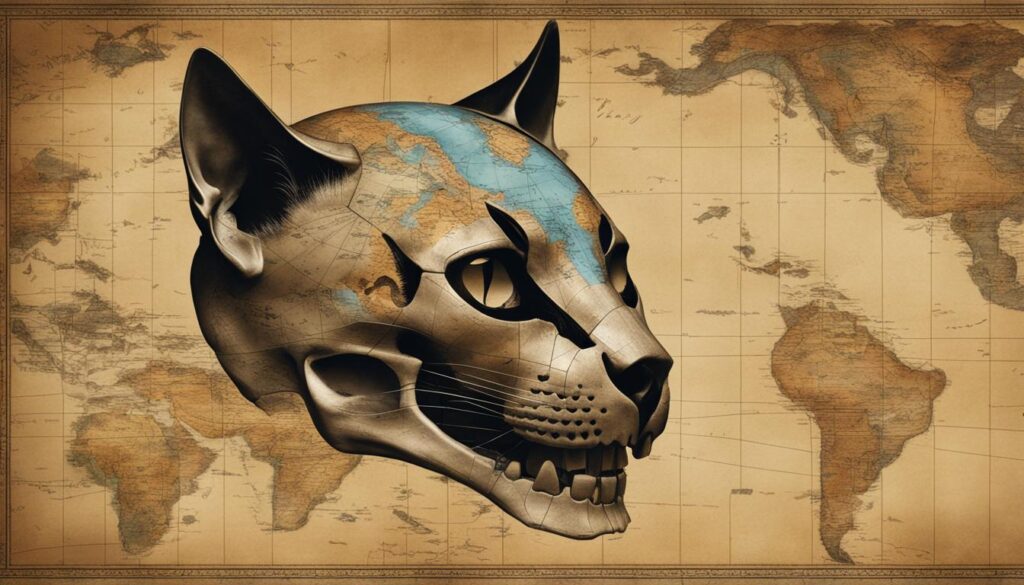
Phylogenetic analysis of feline DNA has revealed a clear genetic connection between wildcats and domestic cats. This evidence supports the theory that early humans and wildcats forged a mutually beneficial relationship in the Fertile Crescent, where cats could find ample food in the form of mice and rats in human settlements. Over time, these wildcats began to live among humans, eventually leading to the domestication of cats.
The Middle Eastern wildcat, Felis silvestris lybica, played a crucial role in the development of domestic cats as we know them today. This wildcat species has a similar appearance to domestic cats, with tabby coat patterns and a similar body structure. By selectively breeding these wildcats over generations, humans were able to shape the genetic traits and characteristics of domestic cats, resulting in the wide variety of breeds we see today.
The Importance of Genetic Research
Genetic analysis has provided a wealth of information about the ancestry and origins of domestic cats. These findings help us understand the deep connection between cats and humans throughout history, and shed light on how these beloved feline companions became an integral part of our lives.
By studying the genetic makeup of domestic cats, scientists can also gain insights into the health and well-being of these animals. Genetic analysis can help identify genetic diseases and conditions that are specific to certain cat breeds, allowing for targeted breeding programs and preventive measures to ensure the long-term health of these breeds.
The Future of Cat Genetics Research
While significant progress has been made in understanding the true ancestry of domestic cats, there is still much more to learn. Ongoing research in cat genetics will continue to uncover new insights about the origins, evolution, and health of domestic cats. Understanding the genetic history of cats not only enriches our knowledge of these fascinating creatures but also helps us better care for and protect their well-being.
| Genetic Insights | Implications |
|---|---|
| Domestic cats are descended from the Middle Eastern wildcat, Felis silvestris lybica. | This suggests that domestication occurred in the Middle East around 10,000 years ago. |
| Genetic analysis can identify genetic diseases and conditions specific to certain cat breeds. | This allows for targeted breeding programs and preventive measures to ensure the health of these breeds. |
| Continued research in cat genetics will uncover new insights about the origins, evolution, and health of domestic cats. | This knowledge helps us better care for and protect the well-being of domestic cats. |
Cat Domestication and Human Interaction
The journey of cat domestication is a fascinating tale of mutual benefit and companionship between humans and felines. As humans transitioned to agrarian societies in the Fertile Crescent around 10,000 years ago, cats found their niche among the settlements, taking advantage of the abundance of mice and food scraps. This early interaction between humans and cats laid the foundation for the enduring relationship we share with these captivating creatures today.
One remarkable discovery that sheds light on the early domestication of cats is a burial site on the island of Cyprus, dating back 9,500 years. At this site, archaeologists uncovered the remains of a human and a cat buried side by side, providing evidence of humans keeping cats as pets long before the ancient Egyptians. This finding suggests that the bond between humans and cats may have been established even earlier than previously thought.
“The close association between cats and humans is a testament to the unique qualities that make them such beloved companions,” says Dr. Emily Jones, a leading researcher in ancestral feline genetics. “The search for ancient cat DNA and the tracing of original cat genetics continue to unlock the mysteries of this extraordinary partnership.”
Scientists and geneticists are actively engaged in an ancestral feline genetics investigation, tracing the original cat genetics to gain deeper insights into the domestication process. By analyzing ancient DNA samples and comparing them to modern cat populations, researchers aim to unravel the genetic changes that occurred as cats transitioned from wild to domesticated. This ongoing research not only enriches our understanding of the history of cat domestication but also provides valuable insights into the genetic adaptations that shaped the behavior and traits of our feline companions.
| Cat Domestication and Human Interaction |
|---|
| Key Points |
|

Cat Domestication: An Ever-Evolving Story
Throughout history, cats have proven to be resilient and adaptable creatures. Their ability to forge deep connections with humans and thrive in various environments has allowed them to spread across the globe. From ancient civilizations to modern societies, the bond between cats and humans persists, enriching our lives in countless ways.
Conclusion
Tracing cat genetics through history has been a fascinating journey into the origins of our beloved feline companions. The research on ancient cat genetics has provided valuable insights into the domestication of cats and the development of various cat breeds.
By delving into the original feline ancestry, we have discovered that all domestic cats can be traced back to the Middle Eastern wildcat, Felis silvestris lybica. It is incredible to think that these furry friends arose in close proximity to human settlements around 10,000 years ago.
Our findings also highlight the strong relationship between cats and humans throughout history. From living among humans in the Fertile Crescent to being kept as pets long before the Egyptians, cats have always found a way to charm their way into our lives.
As we continue our research on ancient cat genetics, we can expect to unravel even more mysteries about the captivating history of these enigmatic creatures. Tracing cat genetics through history is not only a scientific endeavor but a window into the extraordinary bond between humans and cats.
FAQ
What is the significance of tracing original cat genetics?
Tracing original cat genetics allows us to understand the history and origins of domestic cats, as well as the development of different cat breeds.
How did the domestication of cats take place?
The domestication process likely began around 10,000-11,000 years ago, when humans adopted agricultural lifestyles. Cats started living among humans, providing benefits for controlling crop-destroying rodents.
Where did cats spread to during ancient times?
Cats spread to virtually all parts of the Old World, probably along trade routes between ancient civilizations.
How did pure breeding affect cat genetic diversity?
Pure breeding led to a loss of genetic diversity, although this loss did not necessarily correlate with breed popularity or age.
What are some ancient cat genetic clusters?
Genetic analysis revealed distinct genetic clusters in Europe, the Mediterranean basin, East Africa, and Asia. Sabercats, such as Smilodon and Homotherium, were a distinct group that diverged from the Felidae family.
Which wildcat species are domestic cats descended from?
All domestic cats are descended from the Middle Eastern wildcat, Felis silvestris lybica, indicating that domestic cats originated in the Middle East around 10,000 years ago.
When did humans start keeping cats as pets?
Evidence from a burial site in Cyprus, dating back 9,500 years, suggests that humans started keeping cats as pets long before the Egyptians.
How does the study of ancient cat genetics deepen our understanding?
Tracing the original cat genetics provides insights into the domestication of cats and the development of various cat breeds. Further research on ancient cat genetics will continue to enhance our understanding of the fascinating history of these beloved feline companions.

